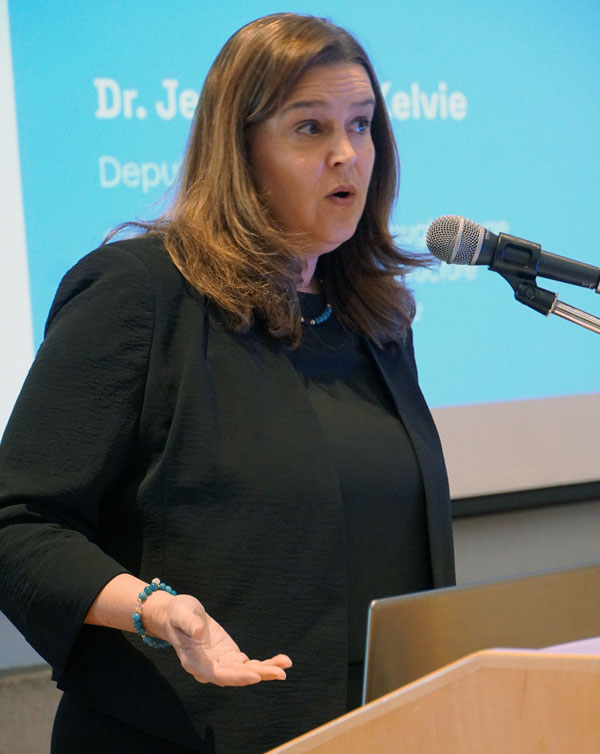HousingIf the City of Toronto is to meet its goal of adding 285,000 new homes over the next decade, it won’t be by simply densifying existing residential neighbourhoods.
“Rethinking how our land can be used in innovative ways is the key to getting more housing built and brownfields…is the key to unlocking that potential,” said Jennifer McKelvie, Toronto’s deputy mayor and a city councillor for Scarborough-Rouge Park.

The keynote speaker at the (CBN) annual conference at Toronto Metropolitan University recently, McKelvie told a packed luncheon the city has 68 brownfields, more inventory than other municipalities, because of the city’s high concentration of old industrial and commercial areas.
“The more we can redevelop these underutilized sites, the more it helps prevent urban sprawl and it really helps to protect the Greenbelt and associated areas.”
She said while the province governs brownfields, the city can create new zoning bylaws to allow new uses on brownfields, which includes housing.
A geoscientist prior to being elected to Toronto City Council in 2018, McKelvie said the city’s brownfield remediation tax assistance program encourages investment in difficult properties by cancelling all or a portion of property tax increases related to remediation that hikes the value of the lands.
The chair of the city’s infrastructure and environment committee, she cited three “transformative brownfield projects” that will add housing for upwards of 200,000 residents.
Lands overseen by will add 70,000 units, 4,300 units more and jobs for 50,000 people are being developed on the former Lever Brothers property in the city’s east end and housing for up to 115,000 people on 370 acres is proposed at the former Downsview airport lands.
Downsview, she said, is Canada’s largest development project and could take 30 years to build.
Waterfront Toronto has committed close to $3 billion to the revitalization of the West Donlands, East Bay Front and the Portlands, she said, adding it has triggered private sector development on adjacent brownfields, including the East Harbour which will have 60 acres of developable land available when flood protection and soil remediation are completed.
“Collectively, these sites help us achieve our climate action goals by incorporating green building technologies, renewable energy, higher order transit…cycling infrastructure and pedestrian-friendly walkways,” she said.
McKelvie told delegates the city’s municipal review conducted every few years allows developers to pitch proposals to convert lands designated for employment to residential use, but often few are approved.
Brownfield conversions to residential are more likely to get the green light partly because they are often by the water or in areas free of large industrial employers that could be seen by residents in a negative light.
“We want to make sure existing industries are protected.”
Concerning for the city, she said, is the high office vacancy rate which “we’re not sure will come back. We’re looking at how we can take that space and convert some of that…to residential.”
McKelvie told the luncheon Toronto is working to consolidate city employees into underutilized buildings, such as the Scarborough Civic Centre.
The remaining surplus properties are being put out to tender for affordable housing in partnership with private developers, she added.
Still, the city is limited in how much housing it can do largely because of budgetary constraints.
The city’s Open Door Affordable Housing Program provides grants, primarily to help private developers with their plans. The city further assists developers by fast-tracking plan approvals, waiving building fees and providing property tax relief, she said.
The “big money” for housing comes from the federal government and the CMHC, she pointed out.
Toronto is expected to have at least 700,000 new residents by 2051.
Of the city’s 10-year plan for new housing, 65,000 units are affordable and 18,000 supportive.






Recent Comments
comments for this post are closed